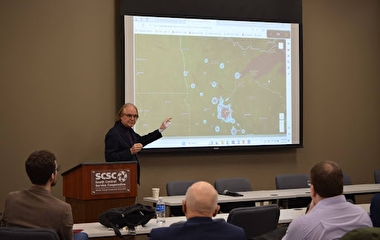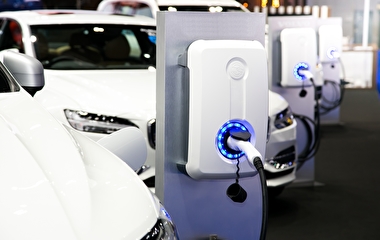Following Gabe Klein’s opening presentation at CTS’s 2016 research conference, a panel of local experts shared their perspectives on how the future of transportation will affect Minnesota’s cities and how local leaders are positioning their cities to become the ‘cities of tomorrow’ that Klein envisions.
How should cities be thinking in order to take advantage of the opportunities Klein describes?
“One of the keys is getting people to change their perspectives, which can be very challenging—many still want a home in the suburbs with a three-car garage,” said Chris Coleman, mayor of the City of Saint Paul. “However, if you look at the appeal of downtowns, you see the vibrancy of places that are walkable; places where people can work, play, live, and drink and never have to use a car. In the future, we will need to overcome the old way of thinking and build cities where we put people first. In addition, we need to ensure we build transit systems not just to where people are, but to where we want them to be.”
What role might the private sector play in creating the cities of the future?
“The private sector is playing a huge role in Rochester—our planning is now being driven by our Destination Medical Center,” said Ardell Brede, mayor of the City of Rochester. DMC is a 20-year economic initiative designed to position the city as a global medical destination center; more than $5 billion in private investments are projected. “Our transportation principle for this project is to make it easy, affordable, and convenient for people from around the world to get to downtown Rochester, to create world-class streets designed for people, and to have at least 30 percent of our workforce coming to the city by transit. We also know that patients and their families who come for healthcare spend 70 percent of their time in the community, so the private sector will play a big role in creating the ample entertainment and leisure-time activities that are needed.”
How can urban transportation systems adapt to the needs of the future?
“In my research, we are examining the localizing movement toward local foods, energy, water treatment, and even transportation systems in cities around the world,” said Anu Ramaswami, a professor in the U of M’s Humphrey School of Public Affairs. “We can see that the answer isn’t service through larger infrastructure, especially in light of the terrible air pollution problems we experience in cities like Beijing. We’ll need to move to smaller, more nimble transportation systems and ensure that the problems we have created with the development of the highway system here in the U.S. don’t become the planning paradigm in developing parts of the world.”



